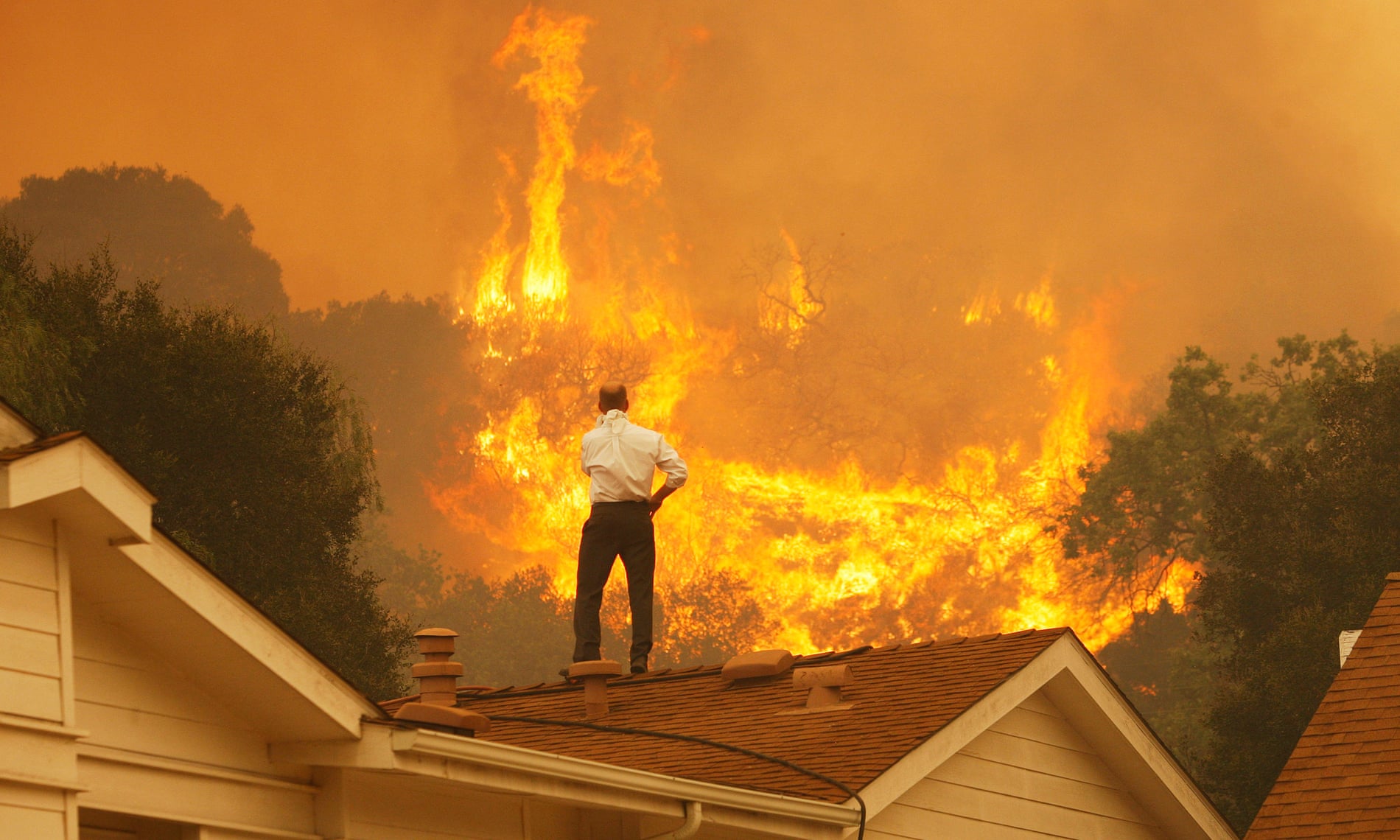
Guardian analysis shows human-caused global heating is driving more frequent and deadly disasters across the planet, in most comprehensive compilation to date
Fri 5 Aug 2022 01.37 AEST
Last modified on Fri 5 Aug 2022 01.39 AESTThe analysis of hundreds of scientific studies – the most comprehensive compilation to date – demonstrates beyond any doubt how humanity’s vast carbon emissions are forcing the climate to disastrous new extremes. At least a dozen of the most serious events, from killer heatwaves to broiling seas, would have been all but impossible without human-caused global heating, the analysis found.
Most worryingly, all this is happening with a rise of just 1C in the planet’s average temperature. The role of global heating in supercharging extreme weather is happening at “astonishing speed”, scientists say.
“The world is changing fast and it’s already hurting us – that is the blunt summary,” said Prof Maarten van Aalst, the director of the International Red Cross Red Crescent Climate Centre. The world is currently on track for a rise of at least 2.5C. Based on what we have experienced so far, that would deliver death and destruction far greater than already suffered.
The studies analysed used a scientific technique called attribution to determine how much worse, or more likely, an extreme weather event was made by human-caused global heating. The technique’s power is in drawing a direct link between the disasters that people suffer through and the often abstract increase in atmospheric greenhouse gases caused by the mass burning of fossil fuels since the Industrial Revolution. It brings the scientific reality of the climate crisis crashing home.
The climate information website Carbon Brief compiled a new database of attribution studies of more than 500 events – every such study available – and shared it exclusively with the Guardian. The analysis of the database and interviews with the world’s leading attribution scientists shows beyond any doubt that we are already deep into the era of climate death and destruction.
The key findings
The 12 events deemed virtually impossible without humanity’s destabilisation of the climate span the globe, including intense heatwaves in North America, Europe and Japan, soaring temperatures in Siberia and sweltering seas off Australia.
Seventy-one per cent of the 500 extreme weather events and trends in the database were found to have been made more likely or more severe by human-caused climate change, including 93% of heatwaves, 68% of droughts and 56% of floods or heavy rain. Only 9% of the events were less likely, mostly cold snaps and snowstorms.
One in three deaths caused by summer heat over the last three decades was the direct result of human-caused global heating, implying a toll of millions.
Huge financial costs are also now attributable to human influence on the climate, such as $67bn of damages when Hurricane Harvey smashed into Texas and Louisiana in 2017, which was 75% of the total damages from the storm.
Global heating has been hurting us for far longer than commonly assumed, with traces of its influence as far back as the heatwaves and droughts that triggered the infamous Dust Bowl in the US in the mid-1930s.
Bad Neuenahr-Ahrweiler, Germany
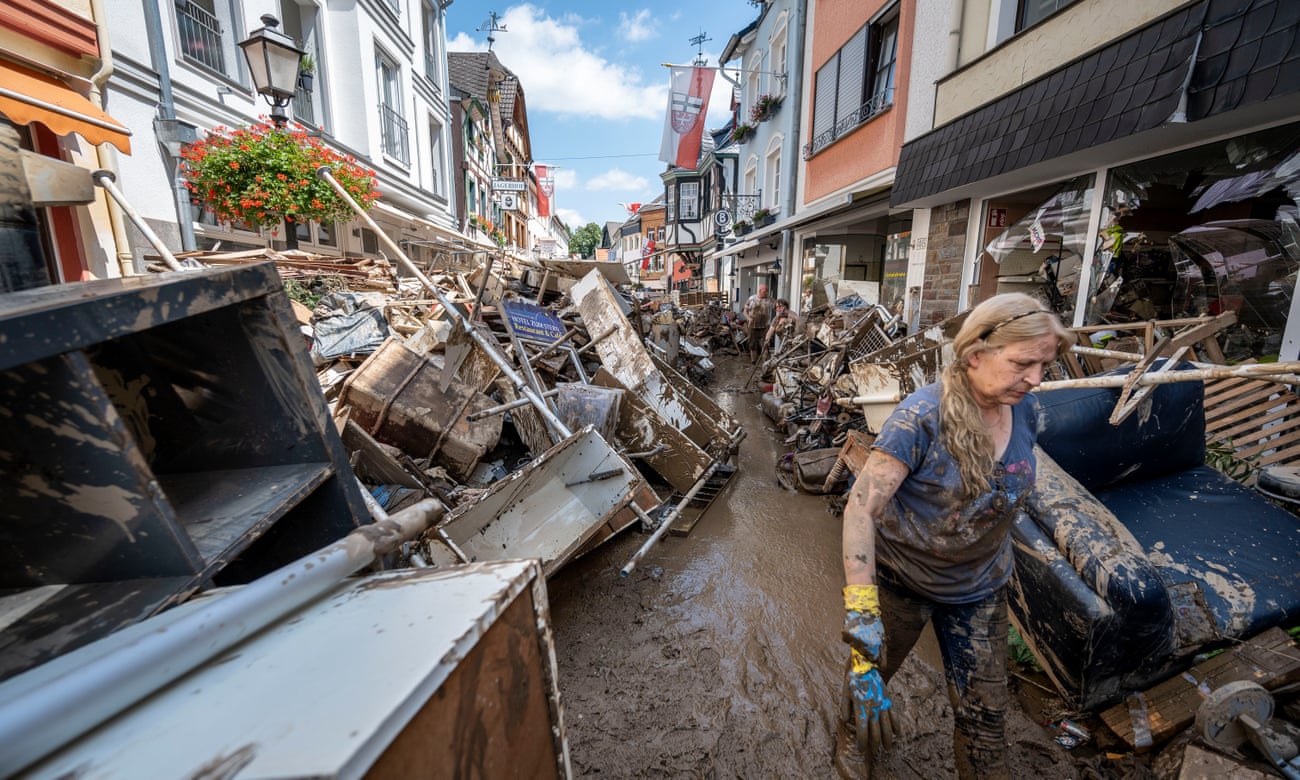
This mapping and analysis of climate catastrophes has never been more relevant. Already in 2022, the climate crisis has rampaged around the planet, bringing the reality of global heating into the homes of billions and to the top of news bulletins. Record-breaking heat has hit North America, Europe, China, India and Pakistan, sparking wildfires in many places. Terrible floods have swept Australia, Bangladesh and South Africa. In due course, scientists will firmly link many of these to global heating, as they did for the fiery northern hemisphere summer of 2018.
But with a crunch UN climate summit in Egypt in November fast approaching, the urgency of the situation is already clear. The goal of limiting heating to 1.5C was “on life support” with a weakening pulse, said the UN general secretary, António Guterres, in July. Without very rapid action to slash carbon emissions – by 50% by 2030 – far worse extreme weather will ensue.
Mitzi Jonelle Tan, a youth activist and survivor of the super typhoons that have hit the Philippines, said: “These studies are proof that what is being done is nowhere near enough. This is a life and death situation.”
There is no time to waste, says Prof Bill McGuire, at University College London: “What is astonishing is the speed with which global heating is translating into a hike in the frequency and intensity of extreme weather when the average temperature of the planet is up by just a little more than 1C.”
Attribution studies have so far assessed only a small fraction of extreme weather events, with particularly concerning gaps in the global south, which is least responsible for the climate crisis but home to many of the people most vulnerable to its effects.
Finding the footprint
The fact that global heating drives more extreme weather is no surprise, even if the pace of change is shocking. Greenhouse gases pumped into the atmosphere by human activity trap more of the sun’s heat, putting more energy into weather systems, worsening their impacts.
Scorching heatwaves are the most obvious manifestation, and can also set forests ablaze. Hotter air can hold more water vapour – about 7% more per 1C rise – which means more intense downpours and greater floods. The oceans absorb most of the planet’s trapped heat, and warmer seas fuel more powerful hurricanes and typhoons. Those heated waters also expand, pushing up sea level and enabling storms to crash further inland.
The question the world’s scientists are tackling is to what extent human-caused global heating is to blame for a particular extreme weather event as opposed to natural variability in weather patterns.
Scientists calculate this by using weather records and computer models to compare two worlds. One is the world we are in, heated by our carbon emissions. The other is the world before the mass burning of fossil fuels and rising temperatures. Researchers assess how frequent a specific extreme weather event is in both worlds. If it is more intense or more frequent in our heated world, then the footprint of global heating is clear.
Jacobabad, Pakistan
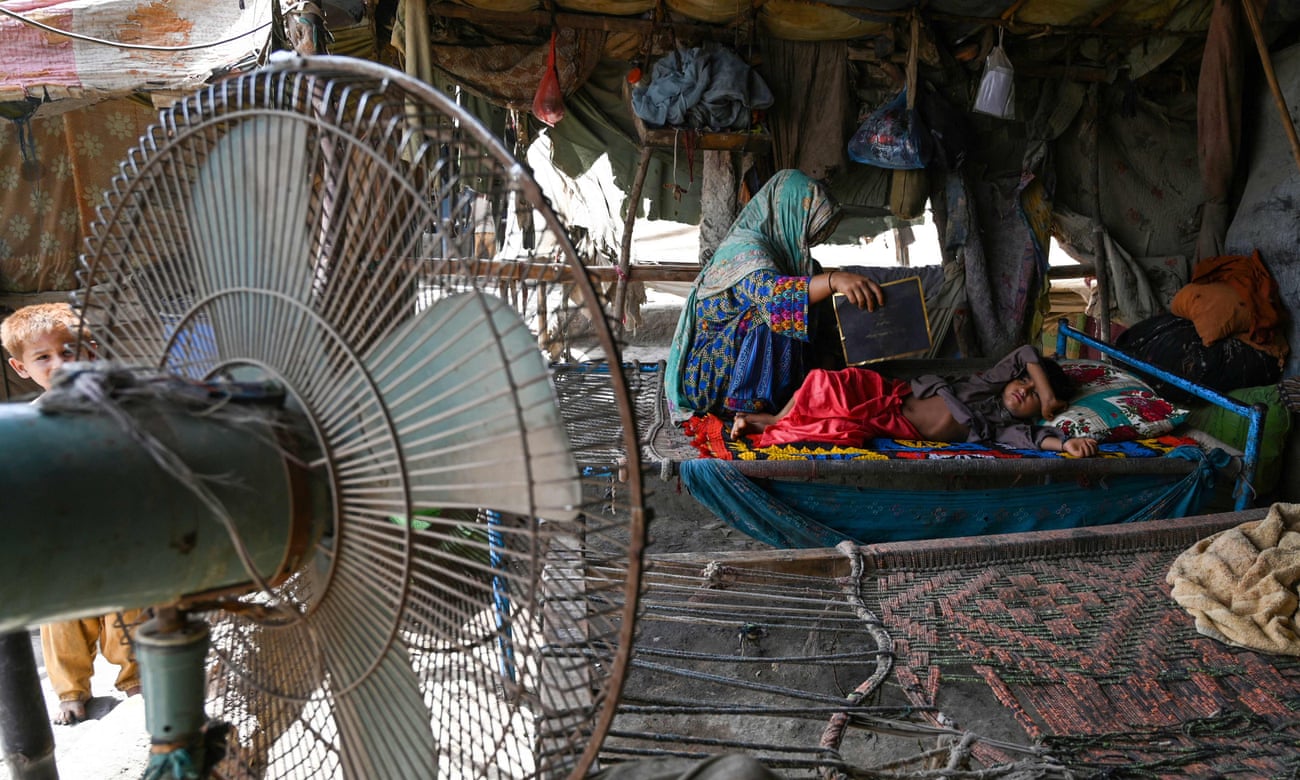
The impossibles
“Now, suddenly, we’re seeing the [climate] boundaries have been pushed out so far that we can say, essentially, these events would not have happened without climate change,” said Van Aalst. “Frankly, I’ve been surprised by how often that’s already been the case.”
The ferocious “heat dome” that struck the Pacific north-west region of North America in 2021 would have been “virtually impossible without human-caused climate change”, scientists found. Otto said: “It broke records by 5C and really brought home to me that something that was impossible from a statistical point of view can now happen as a new extreme. That is scary.”
Yet this once unimaginable calamity would be expected every 10 years on average if the world heats to 2C, Otto said. Her fear is that action to protect people from extreme weather normally uses past disasters as a guide – an approach that is useless if the new extremes are far worse. “It’s really hard if you have never experienced anything even remotely like it.”
The searing summer of 2018 saw simultaneous heatwaves stretch across the northern hemisphere from the US to Japan, and bears a striking resemblance to the events unfolding in 2022. “It is virtually certain the 2018 events would not have occurred without human‐induced climate change,” scientists found. Even six years ago, in 2016, the “extreme warmth across Asia would not have been possible without climate change”, another study found.
The previously impossible is happening on a planetary scale, too. Earth’s run of record‐breaking hot years from 2014 to 2016 would have had a tiny chance of striking – less than 0.03% – without human-caused heating, researchers found. Another study found that in many areas, the hottest days and seasons “would not have occurred in thousands of years” without global heating.
Normally cold places are particularly vulnerable as they are warming the fastest. The phenomenal heat in Siberia in 2020, when the Arctic town of Verkhoyansk registered a record high of 38C in June, “would have been practically impossible” without human influence. That heat led to wildfires, which scientists estimate were 80% more likely due to global heating, and pumped a record 59m tonnes of CO2 into the atmosphere.
The oceans absorb most of the climate crisis’s heat, hitting marine life hard and the billions of people who rely on the seas. The marine heatwave of 2017-18 in the Tasman Sea was “virtually impossible without anthropogenic influence” and resulted in new disease outbreaks in farmed shellfish and the death of wildlife. Almost 90% of marine heatwaves today are attributable to human-induced warming, scientists estimate.
Tokyo, Japan
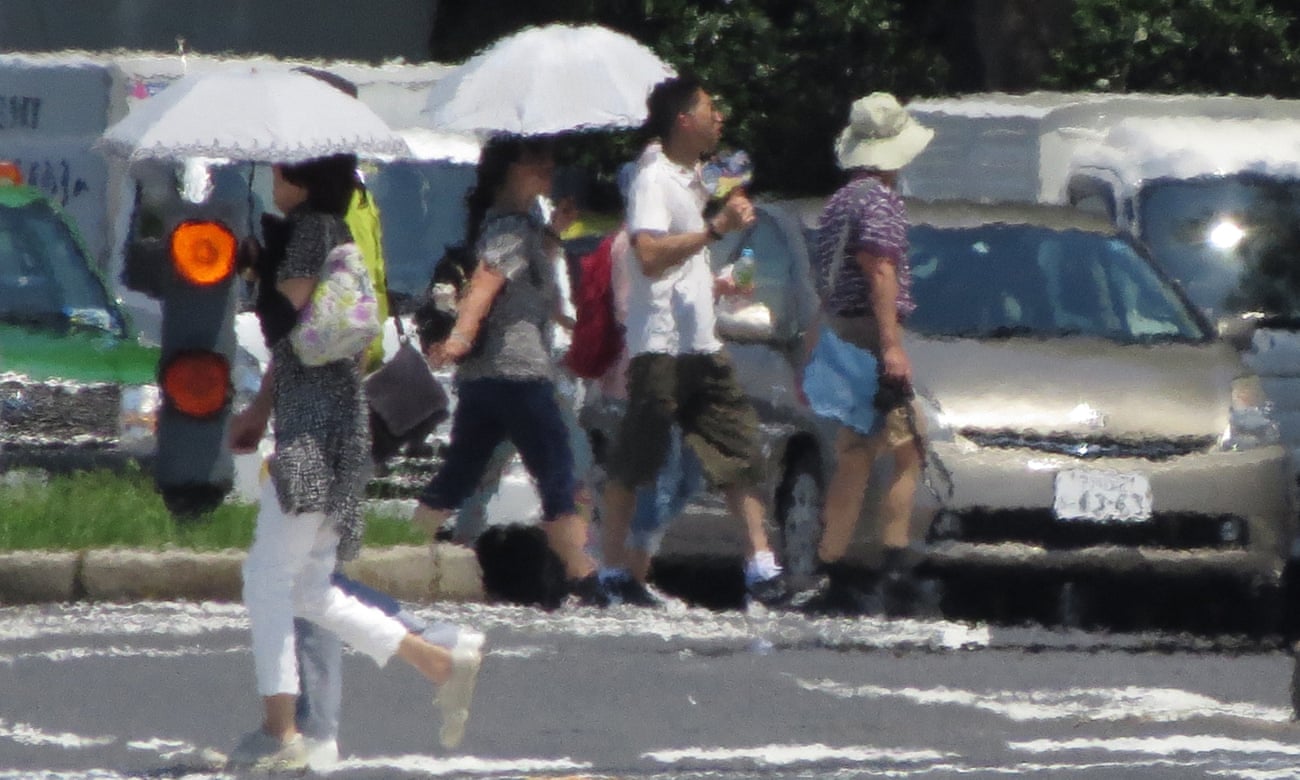
The costs
The first large-scale study produced stark results: more than a third of heat-related deaths in summer from 1991 to 2018 occurred as a result of human-caused global heating. “Increased mortality is evident on every continent,” said Dr Ana Maria Vicedo-Cabrera, of the University of Berne, Switzerland, who led the study. “The key message is that climate change is already affecting our health.”
In the worst-affected cities, hundreds of people a year on average are already dying from this extra heat, including in São Paulo (239 deaths), Athens (189), Madrid (177), Tokyo (156), Bangkok (146) and New York (141). The study covered 732 locations in 43 nations; a lack of data limited wider coverage. It is tricky to extrapolate these findings to a global figure, but a rough estimate given by the scientists is more than 100,000 deaths a year. Over decades, that implies a toll of millions of lives.
Some places are being hit especially hard. About three-quarters of heat deaths in Ecuador, Colombia, Guatemala and Peru result from human-caused global heating, far above the 37% average in the study. This is a consequence of especially rapid heating in these regions combined with the high vulnerability of poorer people.
About 66% of heat deaths in Kuwait and Iran are also attributed to the climate crisis, while in Norway the proportion is almost 50%. Southern Europe has a high number of deaths owing to an elderly population and the rapidly rising frequency of heatwaves.
The grim toll of human-caused global heating on children was revealed in a study that found it had killed 7,000 to 11,000 children under five every year for the last decade in sub-Saharan Africa. The level of heat-related child deaths was double what it would have been without climate change, the researchers said.
Prof Dann Mitchell, of the University of Bristol, UK, warned that countries lacking the health data needed for such studies were often among the poorest and most vulnerable, and, worryingly, also major hotspots of rapid population growth, such as India and Nigeria.
However, pinning the blame for deaths on global heating does not mean they cannot be prevented with early warnings and adaptation. In Europe, for example, said Van Aalst, “these are almost entirely avoidable deaths”.
The number of global heating deaths caused by more complex extreme weather is trickier to assess. But the increased intensity of Hurricane Maria due to human-induced climate change led to the deaths of up to 3,670 people in 2017, according to one study.
Extreme weather also destroys houses, businesses, roads, bridges and more, and researchers have begun adding up these costs. Hurricane Harvey’s $67bn in climate costs was in part due to global heating having increased the extreme rainfall by about 20%. In the UK, the exacerbation of four floods between 2000 and 2020 by global heating caused $9bn of damages, half of the total.
The food suuplies we rely on are also being ravaged by human-caused global heating. Between 1991 and 2017, $27bn of insured crops in the US were lost as a result of humanity’s emissions. On the other side of the world, New Zealand farmers lost US$185m of crops to the deepening of droughts by the climate crisis in the decade to 2017.
Houston, Texas, US
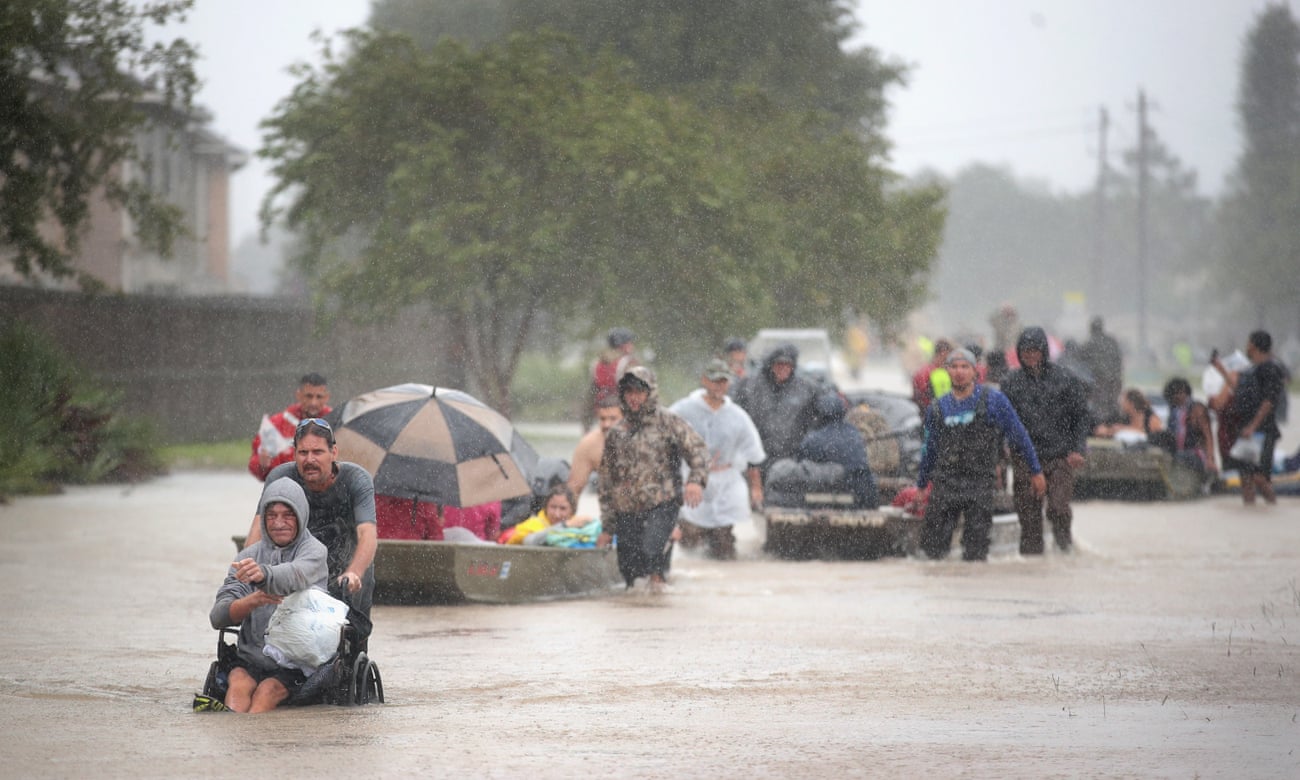
All around the world
Europe
July temperatures in France in 2019, when heat records tumbled like dominoes and Paris hit 42.6C, prompted one of the most startling attribution studies to date. It was not just the scientists’ conclusion that “remarkably, the heatwave might not have been possible without climate change”, but the scale of the soaring temperature increases.
“The heatwave we looked at in Toulouse would have been 4C cooler without climate change, and that was in a world that had only had 1C of global warming,” Otto said. “A change of 4C is incredible.”
Scientists are increasingly concerned that the steady rise in global average temperature is not mirrored by a gradual rise in extreme weather but is delivering extraordinary events. “We so often see things that take us by surprise,” said Van Aalst. “The heat trends in western Europe, for instance, are so much faster in the observations than we would expect from the models.” Researchers think the models do not yet capture all the factors involved.
The climate crisis is also manifesting in places better known for mild weather. The UK’s temperature record was smashed in 46 different places in July this year, topping 40C for the first time in some, and the heatwave is estimated to have killed about 1,000 people. The heat was made 10 times more likely by global heating. The UK’s wettest day was delivered by Storm Alex in 2020, which cut off power for many. The downpour was made 2.5 times more likely by human climate influence.
North America
In the US, Texas suffers frequently. But, more than a decade ago in 2011, when the then governor, Rick Perry, was falsely accusing climate scientists of manipulating data, there was an exceptionally hot summer, found to have been made 10 times more likely by global heating.
In California, the worst drought in a millennium hit between 2012 and 2014, with human-caused global heating a “substantial” factor. Tens of thousands of farm workers lost their jobs, billions of dollars of damage was recorded and 100m trees died.
Wildfires often accompany droughts, and they have raged across the western US, torching homes and more. The area burned between 1984 and 2015 was doubled by global heating, scientists estimate. In Canada’s wildfire season of 2017, the record area burned in British Columbia – more than a million hectares – was between seven and 11 times greater than it would have been without global heating.
Vancouver, Canada

Asia
Global heating supercharged the super typhoon Haiyan, which battered the Philippines in 2013, pushing up a storm surge that sent ocean water crashing inland by 20%, killing 7,000 people.
“I grew up seeing these typhoons devastating our communities,” said Tan, the youth activist. “These attribution studies aren’t just studies. Each statistic reflects a community that experienced that extreme weather event – a family, an individual, a student, a young person whose lives were devastated because of the climate crisis.”
China in particular is enduring a rollercoaster of extreme weather made worse by global heating. Exceptional rains at the start of 2019 were made 30% more likely and blocked out the sun in the Middle-Lower Yangtze Plain, cutting sunshine hours by 57% and reducing rice production.
By May that year, drought conditions had arrived in south-west China. The severe low rainfall event was made about six times more likely by human climate influence. Extreme wildfires followed in south China, with the weather-related risk ramped up sevenfold by global heating. In one conflagration, “a huge fireball was formed in an instant”, the authorities reported, killing 30 people.
A year later, it was heavy rain that struck south-west China in August. Flood waters reached the toes of the famous Leshan Giant Buddha statue for the first time since the communist state was formed in 1949. The deluge was made twice as likely by human influence. In 2020, heat plagued southern China – “hot events similar to [this] cannot occur under past climate,” researchers said.
India, Asia’s other population superpower, has been far less studied. But a rapid analysis found that the sweltering heat that hit north-west India and south-east Pakistan in March and April this year was made 30 times more likely by the climate crisis. A similar heatwave in 2010 was made 100 times more likely, scientists calculated.
Deadly fires in Indonesia in 2015 were boosted by high temperatures, the chances of which were “substantially increased” by human-induced climate change. The vast haze of smoke that engulfed the region, and kept millions of children out of school, is estimated to have killed 100,000 people.
The Arabian Gulf, which may face unsurvivable conditions in future, appears to have been barely assessed by attribution studies.
Australia
Australia may until recently have had a government that had little concern for the climate crisis, but the climate crisis remains an extraordinary concern for Australia.
In the notorious “black summer” of 2019-20 there were blazing bushfires, and the influence of global heating is now clear. The summer saw a high fire weather index, a measure of dangerous conditions, that was made four times more likely by global heating. Two years earlier, a baking summer in New South Wales was made “at least 50 times more likely”, while a record warm Australian spring in 2014 would probably never have occurred without human-driven CO2 rises in previous decades.
While people sweltered, so did the famous Great Barrier Reef, which suffered a “catastrophic die-off” of corals in 2016. The hot March weather that caused it was made at least 175 times more likely by the human influence on the climate.
Great Barrier Reef, Australia

Africa
The rest of Africa has been poorly studied. But global heating played a significant role in the 2015 drought in Ethiopia, the worst in decades, affecting nearly 10 million people and killing crops and livestock. In Lesotho, global heating was a “critical driver” of a food crisis that gripped the nation in 2007.
Van Aalst said it is vital to remember that these climate-driven events do not act alone but compound other problems. “For instance, there is terrible hunger in the Horn of Africa, with literally thousands of people dying right now and the potential for hundreds of thousands more,” he said. “That is partly drought and other climate-related hazards – they’ve had floods and locust infestations as well.” But the extreme weather had intensified the problems caused by conflicts, a Covid-related rise in extreme poverty and high food prices due to the war in Ukraine, he said.
Not all extreme weather events analysed find an influence from global heating. But these studies are revealing too, said Otto, in highlighting the depth of existing fragility. The recent famine in Madagascar was the result of poverty and overreliance on annual rains, not global heating, research found. “This showed just how much there is to do to even be resilient in the face of the current climate that we have,” let alone a worsening one, Otto said.
Zway, Ethiopia
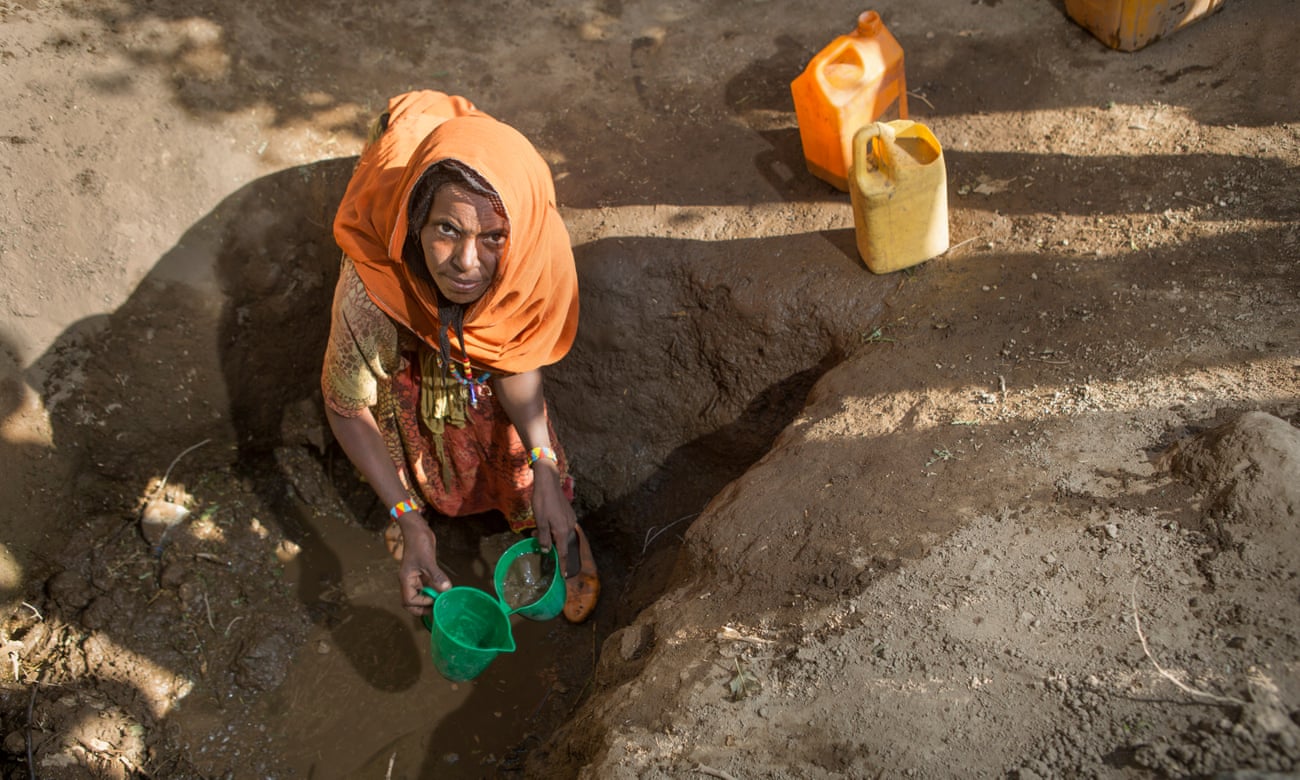
Latin America
But few other attribution studies have been done in Latin America, home to 650 million people. One found the fingerprints of global heating on a severe drought in the southern Amazon in 2010. The subsequent die-off of trees, and stunted growth of others, resulted in 4bn more tonnes of CO2 in the atmosphere, roughly equivalent to the annual emissions of the European Union.
Even more temperate parts of South America have been affected. In December 2013, Argentina endured a heatwave made five times more likely by global heating, and in 2017 major floods in Uruguay were made more likely by the same factor.
Conclusions:
Known unknowns
The scarcity of studies in the global south worries scientists. “It’s a huge concern and is adding to the injustice of climate change,” said Van Aalst. “The people that have contributed the least to it are hit the hardest and we can’t even tell how bad it really is.”
The lack of knowledge is preventing people from finding the best ways to deal with the impacts, says Otto. “Attribution studies are not just about distilling the role of climate change but about trying to disentangle drivers of disasters.” The problem is the lack of local scientific expertise and funding – most researchers work on attribution studies as volunteers.
“Without crucial support for global south-based research, we will be forgotten once again,” said Tan.
Long tail
The heaviest footprint of the climate crisis on human suffering has been found in recent events, but global heating has been hurting us for many years. There are traces of its influence on the heatwaves that caused the Dust Bowl in the US in the mid-1930s. The starving families forced to leave their homes, immortalised in John Steinbeck’s novel The Grapes of Wrath, are mirrored by those enduring heat, drought and hunger today.
A global study of hot weather events since 1900 also found “a significant human contribution to the probability of record‐breaking global temperature events as early as the 1930s”.
The future in our hands
The science of attribution has delivered a bleak but undeniable picture of how global heating is already bringing death and destruction. But what about the future?
“This is what a feverish Earth looks like today,” said Bill McKibben, a climate author and campaigner. “The fact that we’re currently headed for 3C of temperature rise, in the light of these studies, is of course terrifying. And 3C won’t be three times as worse – the damage will be exponential, not linear.”
Vicedo-Cabrera was blunt about our prospects. As the world heated up more and urban populations grew, she said, “the number of [heat] deaths will be much larger”.
The lack of attention paid to scientists’ prior warnings frustrates Van Aalst, who is worried by the pace of the escalating damage. “We are seeing worst-case scenarios known about 10 years ago, that we had feared might happen several decades on, already playing out right now,” he said.
Is there any reason for hope? Perhaps the world will finally realise that acting now is far cheaper than not. “The impacts are so much more expensive than anything we would do to mitigate them,” said Otto.
Attribution studies might also help accelerate the vital funds needed by poorer nations to rebuild after disasters. “They prove that specific extreme weather events, whose damage we know the costs of, were caused by the climate crisis,” said Tan.
Figueres remains stubbornly optimistic. “We are not doomed to a continuation of this madness. We – each of us – still hold the pen that will write the future. Collectively, we have the capacity to make the extraordinary changes we need in order to course correct.”
“It is precisely at this late hour, when for many the darkness is at its most intense, we must find the strength to stand up in the firm conviction that this challenge is as daunting as it is conquerable, and that we can sprint toward the light,” she added.
In the grip of the Dust Bowl, Steinbeck’s character Ma also understood that the future was yet to be written. “Up ahead they’s a thousan’ lives we might live,” she said, “but when it comes it’ll on’y be one.”
No comments:
Post a Comment